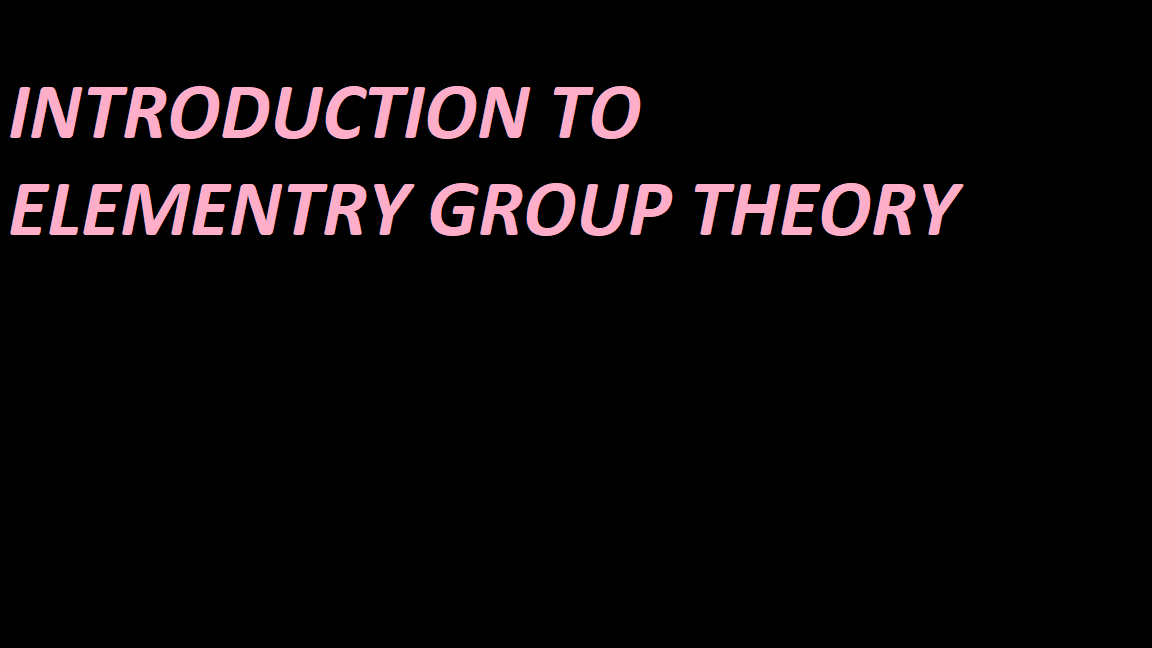Introduction to elementary group theory
Introduction:Group theory is the study of algebraic structures called groups. This theory will rely heavily on set theory and modular arithmetic as well . It will require an understanding o...

Elementary Group Theory
Binary Operation:
f: S ⊗ S → S, S is any set.
f: Q ⊕ Q → Q, Q is a set of rational numbers.
f: Z ⊕ Z → Z, Z is a set of integers.
⊗, ⊕, ౦, x, -, +, ∗ are notations of binary operations.
If any two elements or repeated consideration of the same element give rise to an element of the given set under some operation, then such an operation is called a binary operation.
Example:
E= {2, 4, 6, 8, 10, 12...}
‘+’ is a binary operation, because addition of two even numbers is always an even number.
‘-’ is not a binary operation, because for 2, 4 ∈ E, 2-4=-2 ∉ E.
‘х’ is binary, because multiplication of two numbers is always even.
Properties of Binary Operations:
Closure Property:
For elements a, b ∈ S, a ౦ b ∈ S
Commutative Property:
For a, b ∈ S, a ౦ b = b ౦ a
Associative Property:
For a, b, c ∈ S, (a ౦ b) ౦ c = a ౦ (b ౦ c)
Distributive Property:
For a, b, c ∈ S, a х (b + c) = a х b + a х c and (a + b) х c = a х c + b х c
Existence of Identity Element:
For a ∈ S, there exists an identity element e ∈ S, such that, a ౦ e = e ౦ a = a
Existence of Inverse Element:
For each element a ∈ S, there exists an inverse element a-1 ∈ S, such that,
a ౦ a-1 = a-1 ౦ a = e
Note: Identity element is 0 for addition and 1 for multiplication.
4 + 0 = 4 (addition) and 4 х 1= 4 (multiplication)
Composition Table/ Operation Table/ Cayley’s Table:
A table that represents binary operation on elements of a set is known as Cayley’s table.
Let G= { 1, 0 } and ‘х’ be the operation for the set. Cayley’s table is represented as:
-1 х -1 = 1 -1 х 1 = -1
1 х -1 = -1 1 х 1 = 1
Congruent Modulo:
When a positive integer ‘a’ is divided by a positive integer ‘d’ (divisor denoted as ‘d’), it gives positive integer ‘q’ as quotient and ‘r’ as remainder, then it is written as:
a ≡ r (mod. d) [ and we call it, a congruent r modulo d ]
For example: When 20 is divided by 3,
Quotient = 6
Remainder = 2
∴ 20 ≡ 2 (mod. 3) [ read as, 20 congruent 2 modulo 3 ]

Exercise:
Let Z= { 0, 1, 2 }. Form a composition table for Z under addition modulo 3.
Solution:
Composition table:
Explanation:
0+0=0 0+1=1 0+2=2
1+0=1 1+1=2 1+2=3 ∉ Z
∴ 3 ≡ 0 (mod. 3)
2+0=2 2+1=3 ∉ Z 2+2=4 ∉ Z
∴ 3 ≡ 0 (mod. 3) ∴ 4 ≡ 1 (mod. 3)